When founder Ted Ramirez realized the need for a better game bag, it wasn’t a matter of picking an adequate nylon material from an overseas manufacturer and sewing it into a game bag. Rather, it took more than a decade of research and formulations to create the perfect game bag.
Beyond the fabric itself, no detail could be overlooked in the design and construction process. The stitching needed to be crazy strong without sacrificing breathability at the seams. The sizes needed to be correct for a variety of big game animals. And there needed to be a balance between useful features and lightweight design.
Since launching Caribou Gear in 2008, there have been many attempts to replicate these ideas. They say that imitation is the sincerest form of flattery. And we’ll certainly take the compliment. But there is still no game bag that compares to those offered by Caribou Gear. They are the only game bags to receive a patent in the U.S. and Canada.
Here’s a look at the science behind Caribou Gear game bags and what makes them different from all the rest:
It Starts with the Fabric
Of course the foundation for Caribou Gear game bags is the proprietary fabric. All of our game bags, from the smallest to the largest, are made with this same unique material.
When Ted set out to find a material for his game bags, he went to fabric stores all over the Denver area and along the Front Range. Eventually he broadened his search to out of state and even international manufacturers. The problem was, a game bag needs very specific properties.
For the best possible meat care, a game bag must be breathable. If the bag doesn’t allow airflow around the meat, it will quicken the process to spoilage. That meant that nylon materials wouldn’t work. Even today, most knock-off game bags are made of nylon.
When on the meat pole at hunting camp for example, a quarter should be able to develop a dry “rind” or glaze on the exterior. When you hang a quarter like this in adequate temperatures, it can keep for a very long time. In fact, this type of aging is beneficial.
In a nylon bag however, the meat will not be able to breathe. Instead of forming that outer crust, it will become slimy. This is the first sign of bacterial growth.

For these reasons, nylon materials were eliminated in Ted’s search. One of the most breathable materials is cotton. In a perfectly dry environment, cotton would allow the meat to breathe. Unfortunately, there’s no perfectly dry environment when hunting. Especially when there’s blood involved. In fact, even when it doesn’t come into contact with moisture, cotton will absorb humidity right out of the air. Once cotton is wet, it loses its breathability altogether.
Some manufacturers have attempted to blend cotton with nylon materials to imitate the breathability of Caribou Gear game bags. But as Ted discovered early on, cotton is not a viable option. Not only is it slow to dry and useless when wet, it also lacks the durability to make a practical game bag.
So it was back to the drawing board. Unable to find a suitable material for a game bag, Ted finally connected with a manufacturer who was willing to help Caribou Gear design a new, proprietary fabric from scratch. The result was a new synthetic material, designed from a liquid state, unlike anything ever used in game bag construction.
Pound for pound, the uniquely formulated Caribou Gear fabric is stronger than any of its imitators. It breathes like dry cotton, without actually using any cotton in the process. It’s the perfect material for keeping game meat in prime condition – even in challenging field conditions.
There are now many imitators. Some come close in the way they look. But none of them perform like the patented Caribou Gear fabric.
Species Specific Sizing
Developing a new fabric wasn’t the last stop on the road to creating the best possible game bag. Even now, most game bags only come in a single size. Producing species-specific sizes and a variety of packaged systems for different hunts is a large part of what sets Caribou Gear apart.
Early on in the development process, Ted spent days with local wild game butchers, measuring every animal that came in for processing. He took measurements of elk, deer, antelope, bear and moose. He noted the differences between male and female of each species and the range of possible sizes in each category.
People thought he was a little crazy. And maybe he was. But that detailed information became the ultimate guide for producing a complete line of game bag systems. This would allow Caribou Gear to provide packaged systems that provide hunters with everything they need on a particular hunt – without unnecessary weight or bulk.

For example, the High Country Series is designed for weight-conscious, backcountry hunters. The Muley and the Wapiti are designed to hold a bone-in mule deer buck or bull elk respectively. Each is large enough to hold a mature animal of each species, without anything more than necessary. Each one contains four quarter bags, plus a fifth bag for loins and other loose meat. The Caribou set includes an extra game bag, knowing that in Alaska, hunters in many units are required to take the ribs. And the final compliment to the High Country Series is the Carnivore – designed specifically for carrying boned-out meat.
Meanwhile, our Magnum Pack Series is designed as a more robust system. Using the same fabric, the bags are cut slightly larger in each size/species category to provide extra breathing room. The magnum packs also include additional bags, like a trophy cape bag and a camp meat bag. The camp meat bag is perfect for setting aside enough for that night’s campfire.
The goal all along was to provide hunters with the right number and size of bags for any possible big game hunt – while eliminating any unnecessary weight and space.
The Importance of Construction
After determining the fabric and the dimensions, the next step would be construction. The bags would have to be extremely durable without compromising breathability. While it might seem insignificant, a seam that’s too heavy can impede breathability and increase the risk of spoilage along that strip of meat.
Fortunately, starting with the right fabric provided a head start on construction. Eliminating nylon materials saved some headaches. Since nylon is a naturally slick material, it’s very difficult to hold a seam. If you’ve used nylon game bags over the years, you may have noticed this. Over time, the seams have a tendency to slip. Durability is a real concern. To make the seams strong enough, they have to be very thick. Again, this creates breathability problems.
As mentioned previously, cotton is equally problematic when it comes to durability. It simply doesn’t hold up to the abuse that tough hunting conditions demand.
The Caribou Gear game bag fabric is naturally durable. Without the slickness of nylon, it’s easier to create a durable seam without the bulk. Even so, when originally developing game bags, Ted experimented with many ways to create seams. He found that the best seams are those that rely on the strength of the fabric itself, rather than placing the stress on the stitching. Ultimately, the result is a game bag that’s incredibly durable while minimizing seams. We’ve filled the game bags with water and tested them to over 400 pounds without ever breaking a seam. To see that stress test, check out this video.
Critical Design Features
All of the features incorporated into the Caribou Gear system have come from real world experience while hunting.
On Ted’s first DIY moose hunt in Alaska, he heard wolves howling close to camp, coming from the direction of his moose meat. In the dark, he was unable to see the game bags. This sparked the idea for light reflective attachments.
Several designs were considered, but eventually Ted settled on light reflective tabs sewn into the seams. A reflective band sewn all the way around the bags would definitely be easy to see. But this would have inhibited breathability. So, tabs were incorporated into the existing seams. And these light reflective tabs weren't just randomly placed on the outside of the bags. They are in strategic locations, making them easy to find at night when hanging from a tree. One tab is placed at the bottom of each bag. And one tab is strategically located along the side of the bag, at the bulge of a front quarter or hindquarter. Here at the widest point of the bag, the tab sticks out where it's easy to see.
Later on that same trip to Alaska after a bush flight back to civilization, the moose quarters hung in a walk-in that was full of other hunter’s meat. Ted was concerned that his meat had been swapped with someone else’s. This gave him the idea for the lock loops that now accompany all Caribou Gear game bags. Using the lock loops, we can easily secure the bags with a zip tie and attach waterproof, tear-proof ID tags for easy identification. No more guessing what’s in each bag, or whose is whose.

We could have saved a few grams by eliminating these extra features. But we’ve found that for practical use in the field, these items are absolutely worth that minimal increase in weight. In every aspect, we’ve worked hard to create game bags that are as light and packable as possible – without ever sacrificing usefulness or durability.
Finally, we’re often asked why our bags don’t have a Caribou Gear logo. We’re proud of our game bags. But meat care comes above everything else. In the design process, the use of a logo on the bag was very intentionally omitted. In fact, we have to cringe when we see game bags with logos printed across them. When meat is in contact with these areas, it will not breathe. And that’s not a compromise we are willing to make.
From start to finish, meat care is at the forefront. We want to bring home the best possible wild game meat – and we know that our customers do too.
Contact us with Questions
If you have questions about Caribou Gear game bags, or need help finding the right set for your next hunt, please feel free to ask. We’d love to help you get just what you need for the upcoming hunting season!

By Ryan McSparran
Ryan is an outdoor writer based in Colorado, and is proud to be a part of the team at Caribou Gear.








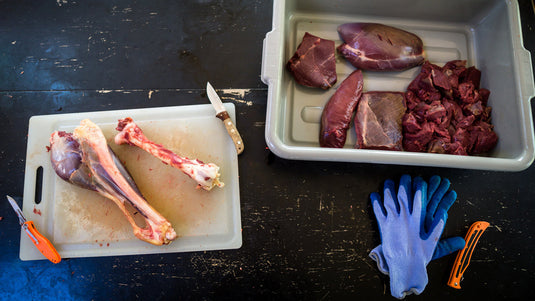
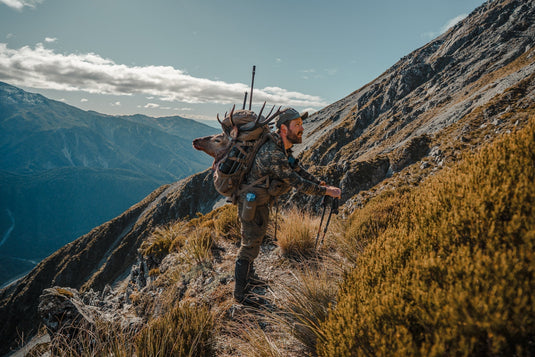
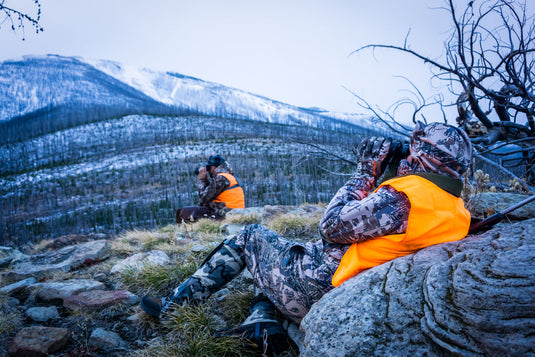
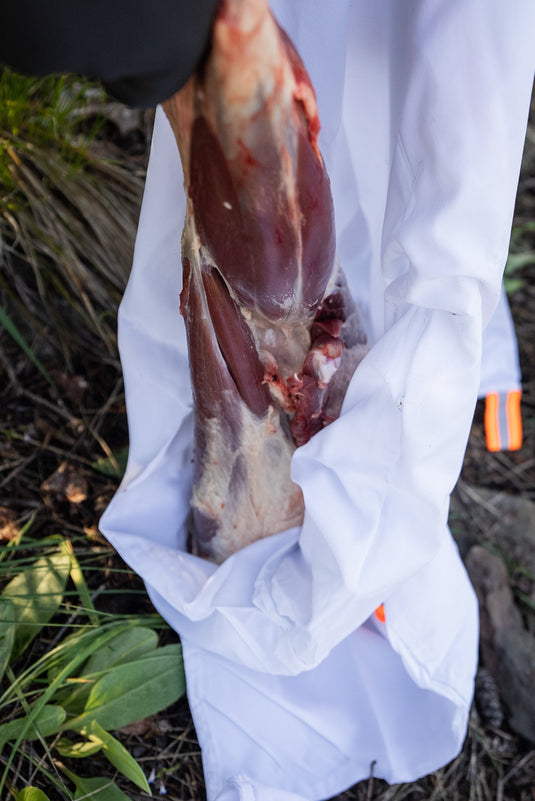
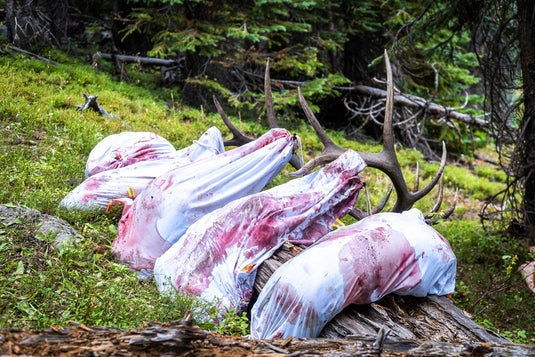
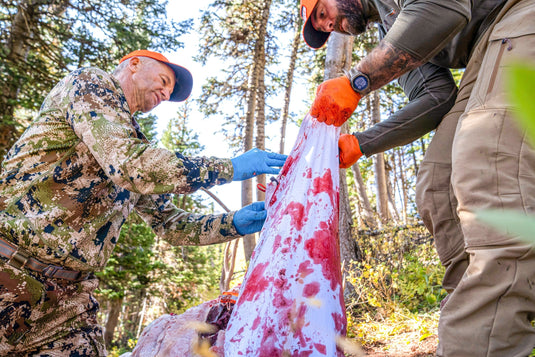
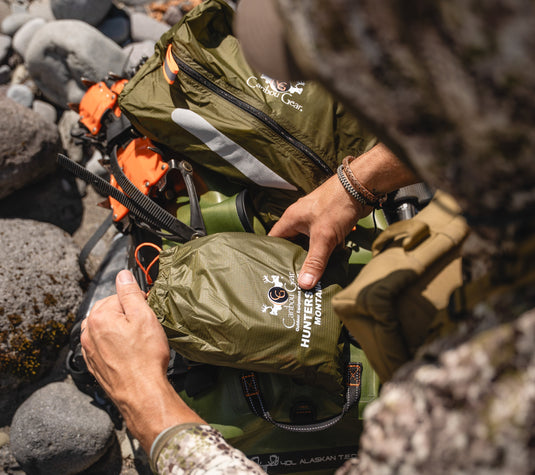
Hi guys
I really like the science and research behind your game bags and would like to get hold of some bags for my hunting trips. Do you perhaps ship to South Africa? I tried Amazon but your products are not available there for our purchase. E-bay also lists only two of your products….
Going on Randy Newburg’s remarks (I only use Caribou Game bags), I also prefer your products above anything else….hope to be able to order some from South Africa soon!
Regards
JC
Hi Ryan & Ted – really appreciate the article…very interesting. I’ve used the same set every year for the past 3 years (4 animals) and they still look good as new and a piece of cake to wash. Very durable. Thanks for making an awesome product.